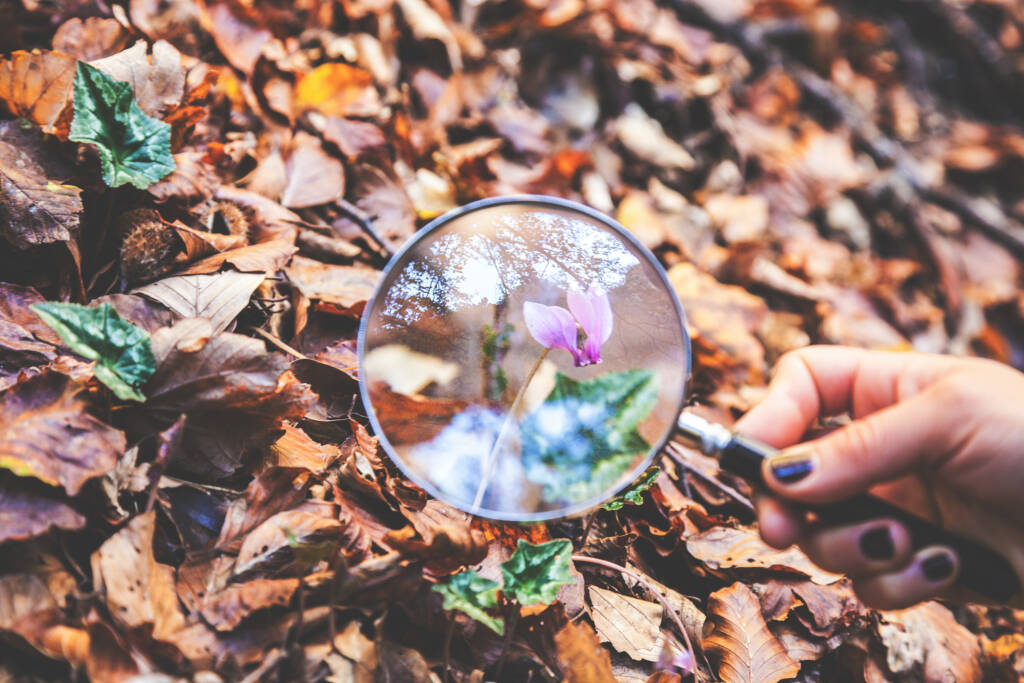
Elementary Science Grade 4

The Elementary Science at VLACS helps students develop a strong foundation in various sciences such as Earth Science, Life Science, and Physical Science. Students will learn through hands-on activities and will be encouraged to ask questions, solve problems, conduct experiments, analyze data, use technology and math skills, explain their findings, design solutions, and communicate their results. The courses are designed to engage students in learning and encourage them to explore, explain, elaborate, and evaluate their understanding. This approach will help students gain a better understanding of the world around them by building on their own experiences and new ideas.
Please view the Elementary Parents Guide for Grades 3-5 with guidance on helping your student transition to online learning and thrive at VLACS.
Major Topics and Concepts
Module 01: Magnets
- 01.00 Module One Pretest
- 01.01 All About Magnets
- 01.02 Magnetic Materials
- 01.03 Attracting and Repelling
- 01.04 Module One Review and Reflection
- 01.05 Module One Assessment
Module 02: Motion of Objects
- 02.00 Module Two Pretest
- 02.01 Changing Position
- 02.02 Changing Direction
- 02.03 The Need for Speed
- 02.04 Module Two Review and Discussion-Based Assessment
- 02.05 Module Two Assessment
Module 03: Energy
- 03.00 Module Three Pretest
- 03.01 Energizing with Energy
- 03.02 Light It Up
- 03.03 All About the Heat
- 03.04 Conductors and Insulators
- 03.05 Feel the Beats
- 03.06 What is pitch?
- 03.07 Causing Motion
- 03.08 Causing Change
- 03.09 Waves of Change
- 03.10 Energy Transformations
- 03.11 Module Three Review and Discussion-Based Assessment
- 03.12 Module Three Assessment
Module 04: Properties of Matter
- 04.00 Module Four Pretest
- 04.01 Physical Properties
- 04.02 Attraction to Magnets
- 04.03 What’s that smell?
- 04.04 The law of what?
- 04.05 Turn up the volume!
- 04.06 Physical Changes
- 04.07 What happened to the marshmallow?
- 04.08 Module Four Review and Discussion-Based Assessment
- 04.09 Module Four Assessment
Module 05: Physical Weathering and Erosion
- 05.00 Module Five Pretest
- 05.01 Physical Weathering
- 05.02 Erosion
- 05.03 Weathering and Erosion
- 05.04 Module Five Review and Reflection
- 05.05 Module Five Assessment
Module 06: Rocks and Minerals
- 06.00 Module Six Pretest
- 06.01 Rock Talk
- 06.02 Mineral Properties
- 06.03 Rocks and Minerals
- 06.04 Three Categories of Rocks
- 06.05 Module Six Review and Discussion-Based Assessment
- 06.06 Module Six Assessment
Module 07: Plant Life
- 07.00 Module Seven Pretest
- 07.01 To flower, or not to flower?
- 07.02 Comparing Plants
- 07.03 Reproductive Structures
- 07.04 The Birds, the Bees, and the Plants
- 07.05 Internal and External Structures
- 07.06 Module Seven Review and Discussion-Based Assessment
- 07.07 Module Seven Assessment
Module 08: Animal Life
- 08.00 Module Eight Pretest
- 08.01 Stages of Life
- 08.02 It’s a Bug’s Life
- 08.03 Comparing Life Stages
- 08.04 Module Eight Review and Reflection
- 08.05 Module Eight Assessment
Module 09: Heredity
- 09.00 Module Nine Pretest
- 09.01 Inherited Characteristics
- 09.02 Effects of the Environment
- 09.03 Heredity and Learning
- 09.04 Structures to Survive
- 09.05 Module Nine Review and Discussion-Based Assessment
- 09.06 Module Nine Assessment
Module 10: Resources and Environment
- 10.00 Module Ten Pretest
- 10.01 What’s for dinner?
- 10.02 Producers and Consumers
- 10.03 The Big Impact
- 10.04 The Impacts of Humans
- 10.05 Resources on Earth
- 10.06 Find the Resources
- 10.07 The Impacts of Earth
- 10.08 Module Ten Review and Reflection
- 10.09 Module Ten Assessment
Module 11: Seasonal Changes
- 11.00 Module Eleven Pretest
- 11.01 As the Seasons Change
- 11.02 Different Seasons, Different Plants
- 11.03 See How Animals Change
- 11.04 Animals, Animals Everywhere
- 11.05 Module Eleven Review and Reflection
- 11.06 Module Eleven Assessment
Module 12: Earth’s Movement
- 12.00 Module Twelve Pretest
- 12.01 A Starry Night
- 12.02 Patterns in the Sky
- 12.03 Different Stars, Different Seasons
- 12.04 The Groovin’, Movin’ Earth
- 12.05 Revolves Around the Sun
- 12.06 The Shapes of the Moon
- 12.07 The Effects of Space Research
- 12.08 Module Twelve Review and Discussion-Based Assessment
- 12.09 Module Twelve Assessment
Course Materials
To achieve success, students are expected to submit work in each course weekly. Students can learn at their own pace; however, “any pace” still means that students must make progress in the course every week. To measure learning, students complete self-checks, practice lessons, multiple choice questions, projects, discussion-based assessments, and discussions. Students and families are expected to maintain regular contact with teachers because, when teachers, students, and parents work together, students are successful.
Required Materials – Please view the list of materials before registering.
Competencies
Energy
I can describe the five basic forms of energy. I can compare insulators and conductors. I can explain the process of producing sound. I can describe the change that can be created by energy. I can describe the process of transforming energy. I can explain the factors that determine air and water as energy sources.
Magnets
I can identify magnetic materials. I can describe the properties of magnets. I can explain the process of a scientific investigation.
Objects and Materials
I can identify the physical characteristics of objects. I can explain the law of Conservation of Mass. I can identify the three physical states of water. I can explain a physical change to an object. I can explain a chemical change to an object.
Objects in Motion
I can explain the motion of objects. I can explain the factors that may cause an object in motion to change direction. I can describe the process to determine the speed of an object.
Rocks and Minerals
I can identify the five properties of minerals. I can Identify the types of tools used to identify mineral properties. I can explain the formation of the three categories of rocks.
Weathering and Erosion
I can explain the process of physical weathering. I can explain the process of erosion. I can compare physical weathering and erosion.
Animal Life
I can describe the major stages in the life cycles of animals. I can compare the life cycles of insects and other animals. I can compare complete and incomplete metamorphosis.
Earth's Movement
I can describe the effects of the rotation of the earth. I can describe the effects of the orbit of the Earth around the sun. I can explain why star patterns appear to move. I can explain the changes of the night sky each season. I can describe the phases of the moon.
Heredity
I can explain inherited plant and animal characteristics. I can explain the effects of the environment on plant and animal characteristics. I can categorize animal behaviors as inherited or learned. I can explain the interdependence of internal and external structures of animals. I can explain the interdependence of internal and external structures of humans.
Humans and the Environment
I can compare producers and consumers. I can categorize resources as renewable or non-renewable. I can analyze the impact that plants, animals, and humans have on the environment.
Plant Life
I can compare the life cycles of flowering and non-flowering plants. I can identify the reproductive structures of a flower. I can explain the reproductive process in flowering plants. I can explain the interdependence of internal and external structures of plants.
Seasonal Changes
I can compare the seasonal changes in plants in varying regions. I can compare the seasonal changes in animals in varying regions.

